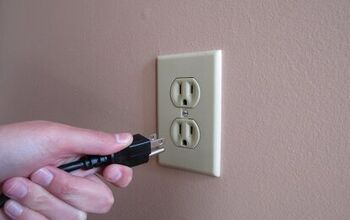How To Heat A Garage Cheaply (Step-by-Step Guide)

One of the best things about owning your own home is having a garage you can use all year-round. If you live in a state that experiences seasons, you may need to heat your garage to work on projects comfortably. Since everyone already has a plethora of other bills to pay for, I wanted to find out how to heat a garage cheaply.
Seal air leaks in your garage to prevent heat loss and put a space heater in the room to cheaply heat it. Install better insulation in your walls so that your garage stays warm, and install a cheap garage heater. Consider radiant floor heating if you want to cheaply heat your cars to keep them in running shape.
If space heaters aren’t your first choice, you’ll find plenty of other options below. I hope you find the perfect product for your home. Before you know it, the ground will be covered with snow, and you’ll be ready to cozy up and get to work in your garage.
Prepping the Space
It doesn’t matter what type of heater you’re working with if the space isn’t properly prepped. The best way to keep a room heated in the winter is to have the walls well insulated. Heating a room that isn’t insulated can be quite pricey.
Follow these simple steps below to prep your garage before purchasing a heater. This does mean you’ll have a higher upfront cost, but it will trim your electric bill immensely.
Step One: Seal Any Air Leaks
The first thing you’ll want to do is get rid of any drafts. To do this, you’ll want to replace the weather stripping that’s around windows and doors in your garage. When you do this, be sure to take a look at the garage door itself and check for any air leaks.
Thankfully, this is a relatively easy project that won’t take a ton of time. Get rid of the old weather stripping and take a sample of it to the hardware store. You’ll likely be able to get a peel and stick set that matches perfectly.
By following the directions on the packaging, you’ll have new weatherstripping in no time. This should be replaced every three years to ensure air leaks are kept out. Something else you can do to control drafts is to look for holes in walls and the foundation.
Use expanding foam insulation to seal any gaps or holes. This will plug them right up and keep things like insects, pests, and drafts outside.
Step Two: Insulate the Walls
Now you’re ready to insulate the walls if you haven’t already. It’s fairly easy to roll out some fluffy pink insulation between studs. Think of insulation as a heavy blanket within the walls to keep heat inside.
When you work with insulation, it’s crucial to have your skin covered. Wear gloves, a love shirt, pants, and shoes. There’s fiberglass in the insulation that can react negatively when it touches the skin.
This is an easy DIY job that’s even easier when you have an assistant to help you. Another option you have is cellulose insulation. You’ll need to call a professional to get this done, and it will cost you a bit more than traditional insulation.
Step Three: Insulate the Garage Door
Many homeowners think that once the walls of their garage are insulated, they’re good to go. If you look at the garage door, it’s practically an entire wall itself. When it gets ignored, you’ll quickly run into heat loss.
There are plenty of great garage door insulation kits on the market that are affordable. This is another easy project you can do yourself that involves cutting insulation boards. Then, you simply attach the boards to your garage door, and you’ll be set.
Portable Garage Heating Options
Once you have your garage properly insulated, you’re on your way to having a toasty room to work in come winter. Here are two popular options for portable garage heating solutions. There are more permanent heaters listed next if that fits your needs more.
Space Heaters
A space heater is a quick, easy, and affordable option. There is a myriad of different space heat options. You can use these for something simple, like keeping warm when starting your car or heating the whole garage as you work on something.
Check the specs of the heater you’re considering to make sure it can heat the entire space if that’s what you need. They could work perfectly to heat a specific corner but could struggle to heat a large garage.
Garage Heaters
There are also garage-specific heaters you can choose from. Electric garage heaters are vent-free heaters that can be placed just about anywhere in a garage. They pack a lot more power than a portable heater and can heat a three-car garage with ease.
If you’re worried about the overall cost, there are gas options as well. You’d buy the unit and hook it up to an existing natural gas line. It’s important that the room can be ventilated, and you’d want to check with your insurance company that you can add one to your property.
If done safely, a wood burning stove can be a very economical way to heat a garage in the winter months. Though, just like indoor wood-burning fireplaces, you’ll want to take the necessary steps to ensure that the stove in your garage is safe. First, you want to check with your local municipality to see if any permits are needed.
Then, consult with your insurance company to make sure that installing a wood stove in your garage for cheap heat will not void your homeowner’s policy. Once installed, you’ll want to clean the chimney and flue periodically, or consider hiring a professional to do so. Otherwise, you put your home and its occupants at risk of exposure to toxic gases.
Permanent Garage Heating Options
A lot of people use their garage as a workshop and spend plenty of time there. Suppose this sounds like you, consider getting a more permanent solution. You may also want to do this if you live somewhere with extremely cold winters.
Radiant Heat Ceiling Panels
These are hardwired ceramic heaters that are mounted on a wall or the ceiling of your garage. The best thing about this option is that it won’t take up any extra space. If you have a small garage, this could be the perfect option for you.
The heating element is completely enclosed, posing as a safer heating solution. If you work with a lot of flammable things, I’d consider installing a radiant heat ceiling panel.
Mini Split Ductless Heaters
Another permanent option is mini-split ductless heaters. These have a higher cost at first but are easy to install and pack a lot of heat. You won’t have to fuss with any ductwork, and they also work as air conditioning systems in the summer.
Radiant Floor Heat
Do you work on cars a lot in your garage? If you do, you know how frigid cold it can be when you lay on the concrete floor in the winter. Radiant floor heating fixes that issue and provides a cozy warm floor.
It works by running hot water tubes under the flooring. It’s surprisingly inexpensive to install, even if the flooring is already finished. You can even install it on top of your existing floor if needed!
Infrared Heater
A low-intensity infrared heater is another permanent heating solution that may work for your garage space. While forced-air units blow air, these heaters radiate heat throughout the space. They typically heat objects first, and then people second.
Electric vs. Gas Garage Heaters
Electric heaters offer a very efficient way to provide heat to your garage. They can be plugged into virtually any electrical outlet and start circulating hot air almost immediately. You can also position electric heaters pretty much anywhere in your garage, such as on the floor, on a table, or mounted to the ceiling or a wall.
Gas heaters, on the other hand, are a better choice if your goal is to save money on monthly energy costs. While they generally cost more upfront, they will cost you less on average per month. To install these heaters, they need to be hooked up to an existing gas line and have a proper ventilation system.
The question of whether an electric or gas heater is better for your garage space, ultimately depends on your preferences. In general, more people tend to lean towards gas heaters because they’re energy-efficient. Gas heaters use less energy and won’t cause such a dent in your wallet when it comes time to pay the bill.
Electric heaters are great because they’re better for the environment. A lot of the time, electric heaters are often safer as well. The electric bill might be higher, but it’s worth the trade-off for some homeowners.
Cost of Heating Your Garage
It’s always a good idea to work with a budget when facing a home improvement project. Even if it’s something as simple as adding a heat source to your garage, you’ll want to compare pricing.
Below I’ve added a cost comparison chart to give you a good idea of what you can expect to spend. These are averages and could cost more or less, depending on a number of factors.
| Heating Solution | Average Cost |
| Space Heater | $50 |
| Garage Heater | $200 |
| Radiant Heat Ceiling Panels | $350 |
| Mini Split Ductless Heaters | $5,000 |
| Radiant Floor Heating | $600 |
Related Questions
How do you heat a garage without insulation?
If you’re working with an uninsulated garage and need to bring the heat, consider using a propane heater. They are high-powered, practically silent, and won’t give off any stinky odors. A radiant style is better for a smaller garage, while a torpedo style heater is best for larger spaces. Since not everyone feels comfortable using gas, there are electric options available as well. These use infrared heating and are known for being incredibly durable.
What size electric heater do I need for my garage?
It can vary depending on your preferences, but the general rule of thumb is 10 watts for every square foot. This means a 4,000-watt heater would be perfect for a 400 square foot garage.
Will a space heater heat a garage?
A garage space heater will generally provide between 5000 and 10000 watts of power and are designed to heat at least a standard sized garage. Though, there are some units that output more than 10000 watts of energy and cat be used to heat larger garages.

Kirstin is a passionate writer who loves helping people learn new things when it comes to home improvement. When she's not behind a keyboard, she enjoys DIY projects, crafts, spending time with her pets, and making videos. She hopes that with all she writes, someone is finding a solution to their home improvement needs.
More by Kirstin Harrington



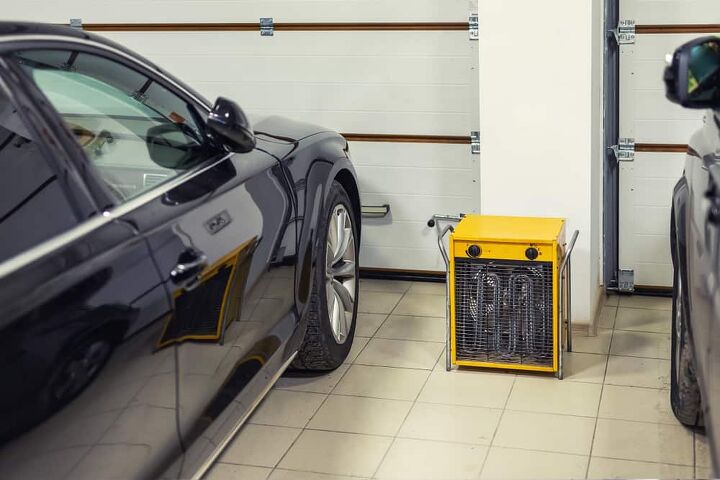






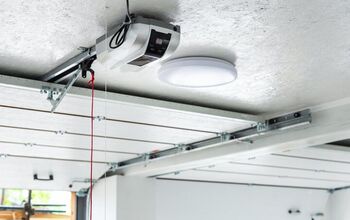

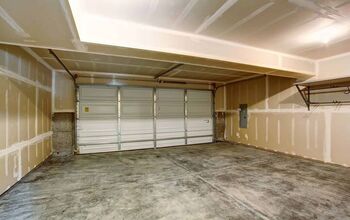


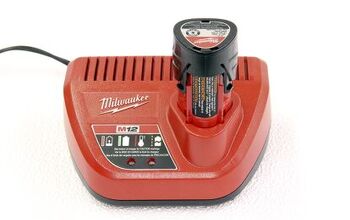
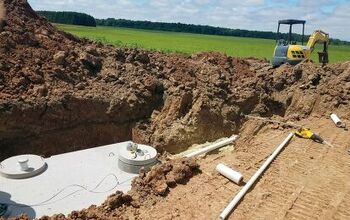





![Standard Dining Room Table Dimensions [for 4, 6, 8, 10 and 12 People]](https://cdn-fastly.upgradedhome.com/media/2023/07/31/9074335/standard-dining-room-table-dimensions-for-4-6-8-10-and-12-people.jpg?size=350x220)

